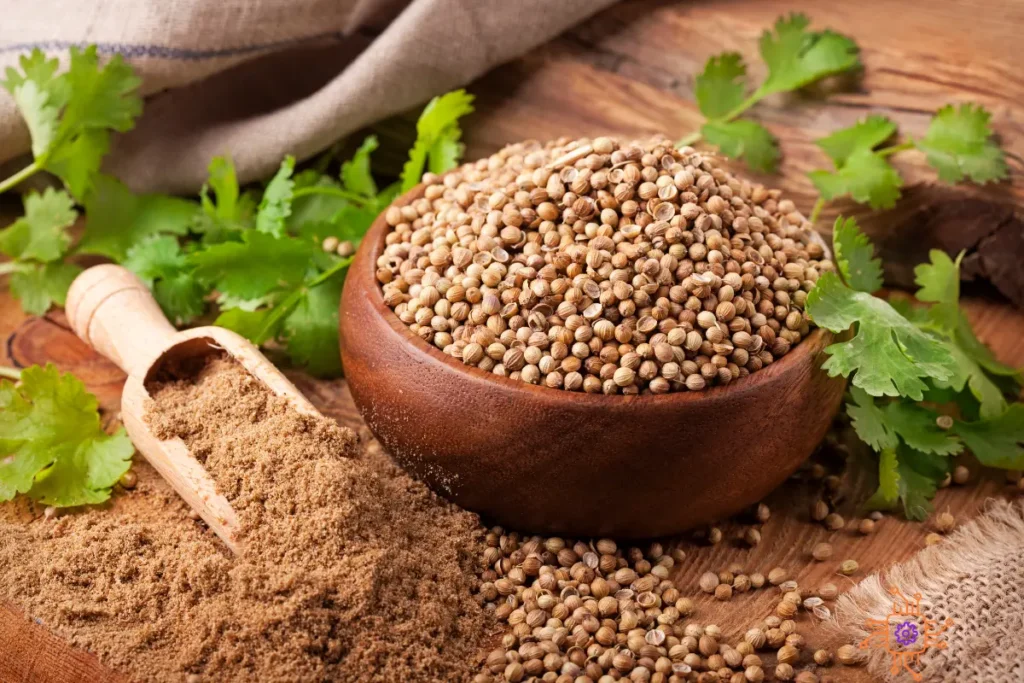Coriander, also known as cilantro or Chinese parsley, is a versatile herb that adds a burst of freshness to various dishes.
Growing coriander at home is not only a rewarding experience but also ensures a readily available supply of this flavorful herb.
Whether you’re a seasoned gardener or a novice with a green thumb, here are eight simple and practical tips to help you cultivate coriander successfully at home.
Choose the Right Location
Coriander loves sunlight but prefers partial shade, especially in hot climates.
Select a location that receives sunlight for at least 4-6 hours a day.
If you’re cultivating coriander indoors, place the pots near a south-facing window where it can get ample sunlight.
Quality Soil Matters:
Coriander thrives in well-draining soil that is rich in organic matter.
Ensure the soil has good aeration and is slightly acidic to neutral.
You can use a mix of potting soil and compost for container gardening.
If you’re planting directly in the ground, add organic matter like compost to enhance soil fertility.

Optimal Watering:
Coriander prefers consistent moisture, so make sure to water it regularly.
However, avoid overwatering, as coriander doesn’t like to sit in waterlogged soil.
Allow the top inch of the soil to dry out between watering sessions.
A good practice is to water the plants in the morning to prevent fungal diseases.
Start from Seeds
Coriander is best grown from seeds, which are readily available in garden centers or online.
Sow the seeds directly in the soil or in pots, about a quarter of an inch deep.
Water the soil lightly after sowing and keep it consistently moist until the seeds germinate, which usually takes around 7-14 days.
Adequate Spacing:
When planting coriander, ensure proper spacing to allow good air circulation and prevent overcrowding.
If you’re growing coriander in pots, space the seeds at least 6 inches apart. For in-ground planting, maintain a distance of 8-10 inches between each plant.
Fertilize Wisely:
Coriander doesn’t require excessive fertilization, but it benefits from a balanced, all-purpose fertilizer.
Apply a diluted liquid fertilizer every 2-3 weeks during the growing season. Be cautious not to over-fertilize, as this can lead to excessive foliage growth with less flavor.
Harvesting Tips:
Harvesting coriander leaves can begin once the plant reaches a height of 6 inches.
Use scissors or pruning shears to snip off the outer leaves, leaving the inner ones to continue growing.
Regular harvesting not only provides you with fresh coriander but also encourages bushier growth.

Combatting Common Pests:
Coriander is relatively resistant to pests, but occasionally, you might encounter aphids or spider mites.
To tackle these issues, use a gentle spray of soapy water on the affected areas. Introducing beneficial insects like ladybugs can also help keep pest populations in check without resorting to harsh chemicals.
In conclusion,
growing coriander at home is an enjoyable and straightforward process that rewards you with a continuous supply of this aromatic herb.
With these eight tips, you’ll be well on your way to cultivating a thriving coriander garden.
Remember to keep it simple, enjoy the process, and savor the flavors of your homegrown coriander in your culinary creations. Happy gardening!

